Finding Fossils
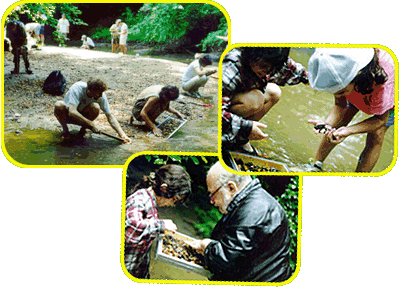
Searching for fossils is like traveling back in time to get a peek at Earth's past. You don't have to be a professional paleontologist to collect the remains of ancient life. Anyone can find fossils. All you need is some basic information, a good location, and a lot of patience.
Not Just Any Rock Will Do
If you want to find fossils, knowing what kind of rocks to search in is half the battle. Most fossils "hide out" in sedimentary rock . When tiny bits of rocks and minerals (called sediment) join together over millions of years, they become sedimentary rock. Plants and animals that become sandwiched in this sediment eventually turn into fossils.
Two examples of sedimentary rocks are sandstone and shale.
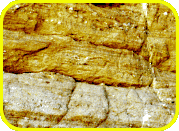
Sandstone is formed by sand particles. It is often found in deserts, beaches, and other sandy environments.
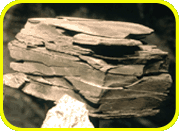
Shale is formed from particles of mud.
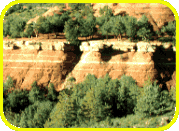
Good places to find fossils are outcrops. An outcrop is a place where old rock is exposed by wind and water erosion and by other people's digging.
Do's and Don'ts for Fossil Hunters

DO'S
- Make sure that you plan to dig in a place where it is okay to collect fossils. Check with an adult if you're not sure.
- Take the following supplies on your fossil hunt:
- toilet paper for wrapping your fossils
- plastic food bags for protecting your fossils
- a backpack for storing the fossils you find
- a field journal for recording your adventures
- plenty of water
- (optional) shovels, screens to sort small loose fossils, geology hammer, chisels, safety goggles
- Be ready to spend a lot of time looking. Fossil hunting can take lots of time and patience, but what you may find is worth the wait!

DONT'S
- Never go fossil-hunting alone.
- Never climb into dangerous areas.
- Never touch animals that you think could be poisonous.
Fossils You May Find
There are three main types of fossils you may find.
* All fossils are shown next to a quarter to show relative size.
INVERTEBRATES
(animals without backbones)

about 435 million years old, found in Ohio

about 435 million years old, found in Ohio

Belemnite
about 72 million years old, found in New Jersey

about 350-375 million years old, found in New York
VERTEBRATES
(animals with backbones)

Dinosaur Eggshell
about 90 million years old, found in Argentina

Dolphin Teeth
about 12-20 million years old, found in North Carolina

Whale Earbone
about 4 million years old, found in California
PLANTS

Fern
about 290 million years old, found in Pennsylvania

Calamites
about 340 million years old, found in Nova Scotia
Keeping a Field Journal
IMPORTANT TIPS:
- Write notes during the trip or as soon as possible!
- Always use waterproof ink so that your observations are safe from being changed or erased.
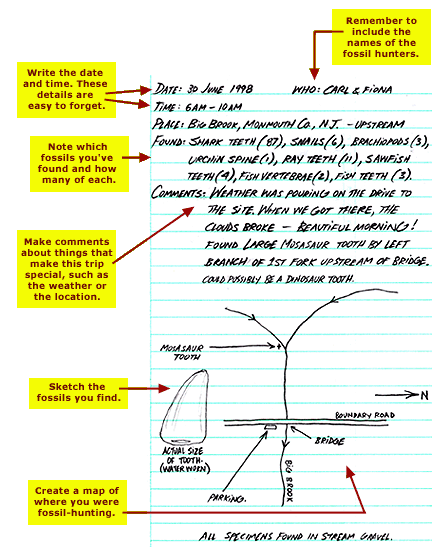
Image Credits:
All photos courtesy of AMNH / Carl Mehling; thumbs up and thumbs down icons, courtesy of Alex Muravev / The Noun Project.




 Biodiversity
Biodiversity
 Brain
Brain
 Genetics
Genetics
 Marine BiOLogy
Marine BiOLogy
 MicrobiOLogy
MicrobiOLogy
 PaleontOLogy
PaleontOLogy
 ZoOLogy
ZoOLogy
 AnthropOLogy
AnthropOLogy
 ArchaeOLogy
ArchaeOLogy
 Astronomy
Astronomy
 Climate Change
Climate Change
 Earth
Earth
 Physics
Physics
 Water
Water
